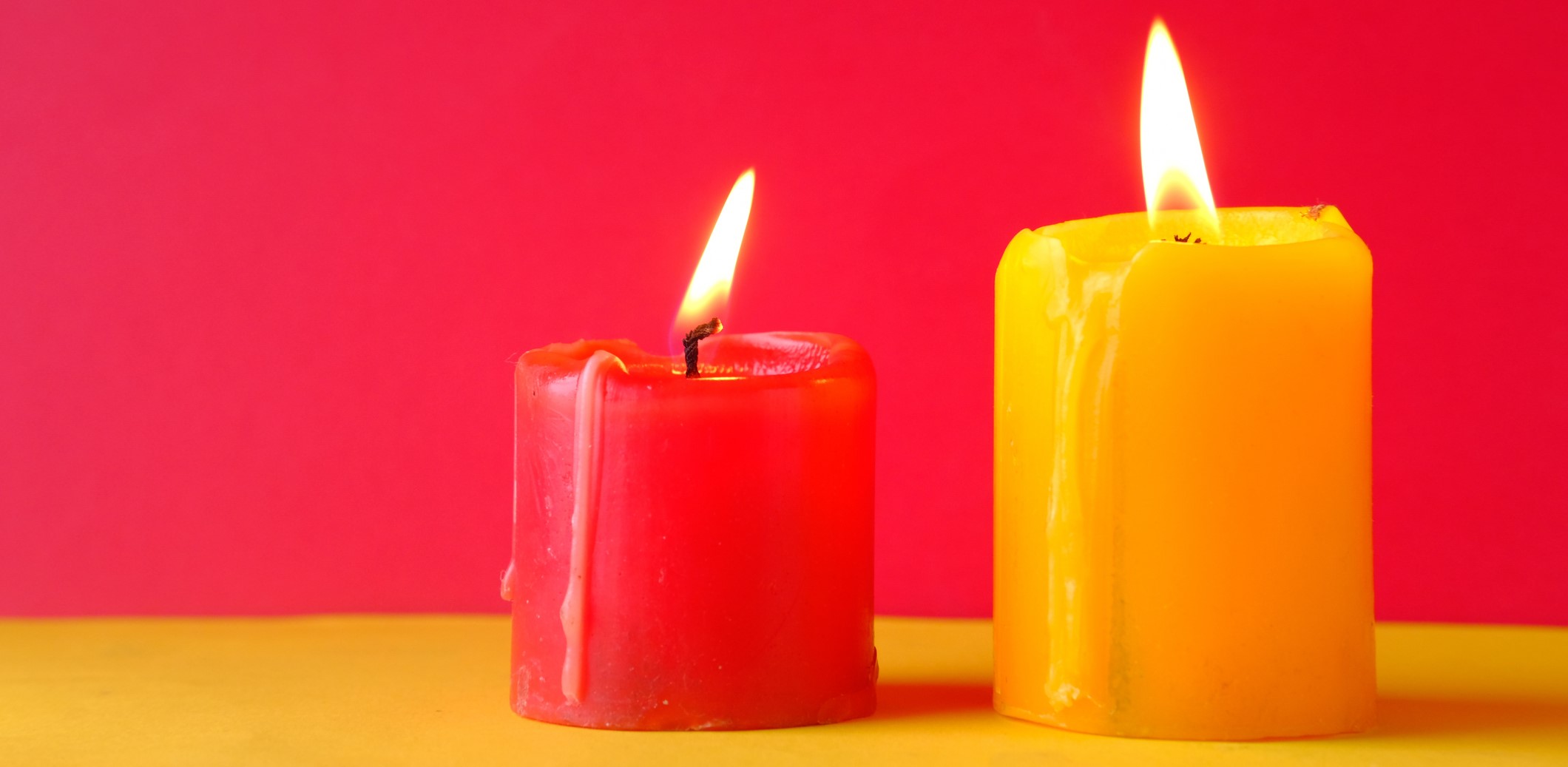Are candles bad for you? We asked experts to spill the tea
Let's settle it: are candles bad for you or is it all hearsay? This what the experts had to say

After a long hard day, there’s nothing like lighting your best scented candles, relaxing in the soft glow with a glass of wine, and filling your home with a luxurious aroma—but are candles bad for you?
You may have seen articles floating around the Internet claiming that your beloved candle could be releasing harmful toxins and chemicals into the air, negatively impacting your health.
There’s a lot of conflicting information out there, so it’s essential to get your facts from reliable, well-researched sources. No one wants to give up the warming scents of cinnamon and vanilla, but it still begs the question, have your favorite candles actually be bad for you all along?
Are candles bad for you?
While candles no doubt make us feel good for a number of reasons, some health care experts warn that there could be some harmful repercussions for those who are allergic.
Sreedhar Krishna, NHS consultant and founder of skindoc, told us: “While most people have no issues with candles, there are a range of volatile organic compounds that are produced while the candle is burning. These include formaldehyde (a preservative), limonene (a fragrance), as well as some petrol compounds. If you are going to use candles, we’d recommend adequate ventilation to avoid inhaling too much of these substances.”
Similarly, Dr. Deborah Lee of Dr. Fox Pharmacy also highlights the ways in which burning candles at home can present danger: "Candles are made of paraffin wax. When you burn paraffin wax, toxic volatile compounds (VOCs) are released into the air. These include acetone, benzene and toluene, which are known to be carcinogenic. These are the same substances found in the exhaust from diesel car fumes and are associated with asthma and allergies. Candles even emit benzene when they have not been lit."
Dr. Lee explains: "VOCs are known to cause a range of symptoms such as eye irritation, a dry mouth or throat, headaches, skin rashes, shortness of breath, and dizziness."
Candle wicks
One commonly cited concern about candles is that their wicks are made with lead. However, that's not true for candles made today. In the past, some candle companies did use lead material to make wicks more rigid, but in 2003, the Consumer Protection Agency banned lead wicks in the United States.
If you have candles hanging around that are older than 2003, there’s still very little chance they have any lead in them. Members of the National Candle Association, which includes big industry names like Yankee Candle, The Wooden Wick Co., and Bath and Body Works, voluntarily agreed to discontinue the use of lead in 1974. If you’re concerned, there’s an easy way to check if your candle is safe. Just rub white paper against the unburnt wick. If the wick leaves a mark that looks like pencil, there's lead in it. If the paper is clean, you have nothing to worry about.

- How to make candles last longer: 5 easy tips to follow
Candle wax
Another concern about candle safety is the base of solid wax. Most candles consist of paraffin wax or soy wax. A 2009 study by South Carolina University produced some alarming findings about the dangers of paraffin wax, which is made from petroleum. According to the study, burning this type of wax can release toxic chemicals like toluene, which is also found in paint thinners, glue, and disinfectants.
But the National Candle Association and the European Candle Association raised questions about the study, mainly because it was never peer-reviewed or published in a reputable journal. Both groups sponsored independent studies, which found that all candle waxes are safe. Researchers determined that any chemicals produced by burning candles are in such low concentrations that they aren't a serious health risk.
Particulate matter
There has also been a lot of attention surrounding the amount of particulate matter and volatile organic compounds that burning candles release into the air.
Particulate matter is solid and liquid particles present in the air we breathe every day. If these minuscule particles make their way into your lungs, it can cause respiratory issues and more severe health problems like heart attacks or strokes. Volatile organic compounds, or VOCs, are made up of carbon, hydrogen, and oxygen. Some occur naturally in flowers and plants. Others, like formaldehyde, can be potentially dangerous.
Candles do release both particulate matter and VOCs, but according to the National Candle Association, there's nothing to indicate that the amount that candles emit is any worse than what you're already exposed to in your everyday life. VOC regulations also exist on products like candles and air fresheners, established by the federal government and some states, like California. These regulations limit VOC concentration and exist to lessen the potential interaction between them and other chemicals in the atmosphere.
Scented candles
Fear not! Your favorite calming, lavender-scented candle is perfectly safe! No matter if the scent is natural or produced in a lab, almost all conform to the safety standards enforced by the International Fragrance Association. This ensures that all chemicals used in candles, perfumes, air fresheners, and other products are non-toxic and safe for human use.
It is worth noting that scented candles can cause problems for certain people with asthma or other respiratory issues. They can also cause allergic reactions, with symptoms like sneezing, runny nose, or blocked sinuses. If you're concerned about using scented candles but still want candlelight ambience, use battery-powered or electric flameless candles instead.

- These are the best Yankee candle scents to get for your home
Candle safety: the basics
Most candle companies adhere to strict safety guidelines when it comes to fragrance and materials used, so they’re perfectly safe and not harmful for most people (unless you have allergies or asthma). However, there are some basic safety rules you should always follow when burning your favorite candle:
- Never leave a burning candle unattended. After you blow out the candle, make sure that the wick ember is no longer glowing before leaving the room. You can also extinguish it with a candle snuffer.
- Keep candles away from kids and pets, and place them where they can’t easily be knocked over.
- Burn candles in a well-ventilated room, but away from any drafts or air currents.
- Keep burning candles away from furniture, drapes, bedding, books, or decorations.
- Before burning, trim the wick down to a quarter of an inch. This will keep the candle from burning unevenly, dripping, or flaring.
- Don't burn a candle for longer than four hours, and wait at least two hours before relighting it.
The My Imperfect Life team is all about helping you navigate your world. We bring you the latest on fashion, beauty, travel and wellness so you can live life on your terms.